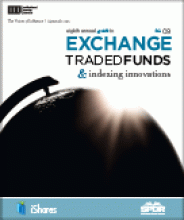Abstract
Leveraged and inverse ETFs—funds designed to achieve a positive or negative multiple of index returns on a daily basis—have grown to more than $30 billion in assets in the three years since their introduction in mid-2006. However, the recent high-volatility market environment has led to some concerns about their performance over time. This article explains how periodically rebalancing a leveraged or inverse fund position can be an effective strategy for investors whose goal is to achieve returns close to the stated daily multiple (e.g., +2x or -2x) of the index return over time. A historical analysis of un-rebalanced versus rebalanced returns for a variety of indexes across a range of market conditions provides evidence of the effectiveness of rebalancing over six-month holding periods. The frequency of rebalancing required depended on the volatility of the underlying index and on whether the stated daily multiple was long (+2x) or inverse (-2x). The rebalancing frequency ranged from as little as three to four times a year for long levered positions on low-volatility indexes to as often as once a week for inverse positions on high-volatility indexes.
- © 2009 Pageant Media Ltd
Don’t have access? Register today to begin unrestricted access to our database of research.








